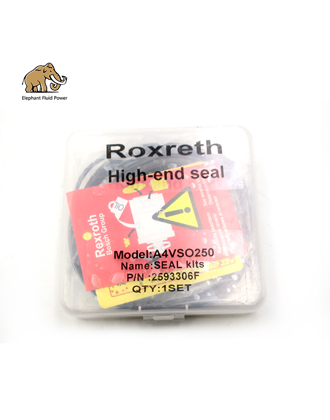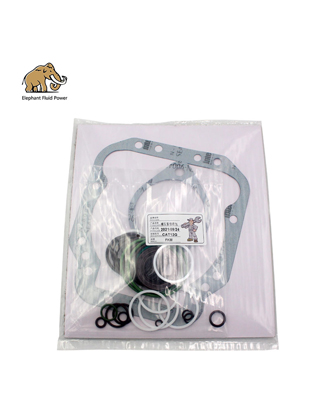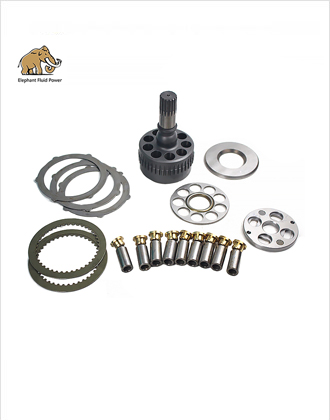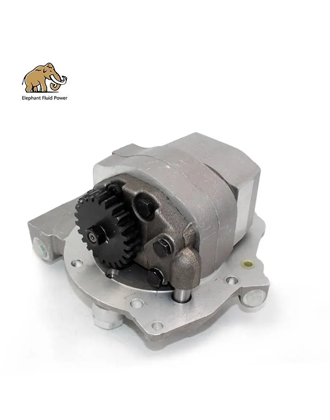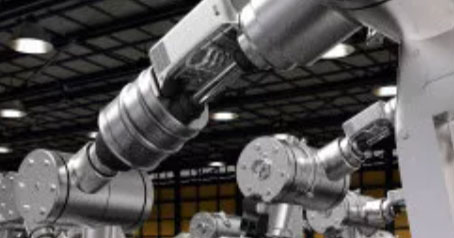The characteristics of the failure of the hydraulic system of construction machinery. The hydraulic mechanical transmission system is mainly composed of hydraulic pumps, control valves, torque converters, transmissions, and power shift transmission valves. Its failures are usually manifested by weak walking or poor hydraulic clutch engagement.
The hydraulic system of the working device is mainly composed of a hydraulic pump, a control valve, a hydraulic motor, and a hydraulic cylinder. Its failure is mainly manifested by the weakness of the motor's walking or turning, and the extension and retraction of the hydraulic cylinder piston. The common characteristics of these two types of system failures are insufficient system pressure.
On-site detection and diagnosis of faults:
(1) Preliminary inspection and diagnosis on site
Find out the relevant situation according to the failure phenomenon, analyze the location of the failure and the preliminary cause against the types of pumps in hydraulic system diagram. Don't ignore the seemingly simple reason, and don't blindly disassemble to avoid unnecessary losses. The following steps should be performed during the specific inspection process.
① Learn the situation from the driver, and make a detailed understanding of the state and sound of the machine when the fault occurs, avoiding trivial problems and making it easy. For example, a 966D loader found that the machine was unable to walk after changing the oil in the transmission. Torque converter oil temperature is too high. After inspection, it was found that the wrong transmission oil number was added. After the cause of the failure was clarified, the failure was quickly eliminated.
② Perform necessary specific operations. Sometimes, the driver's failure to state the cause-effect relationship of the machine failure makes it difficult to diagnose the failure. At this time, the necessary on-site operations will greatly benefit.
③ Inspection of oil quality and quantity. This content may seem simple, but it is often overlooked. For example, a 966D loader (its walking mechanism is a hydraulic transmission system), the driver has completely drained the transmission oil during the holiday. When the assistant came to drive after the relocation of the construction site, he found that the machine could not walk. He thought that there was a major failure, but the maintenance staff at the scene only solved the problem by listening to the sound and checking the oil dipstick to avoid a major accident. For another example, a Hitachi EX220-2 excavator found that the hydraulic oil was insufficient after repairing the hydraulic cylinder, and the hydraulic oil purchased on site was reclaimed oil refined by the soil method, which was added to the fuel tank and caused oil pollution. Deterioration and foaming make the machine weak, and the fault can be eliminated after replacing the hydraulic oil. Therefore, attention must be paid to the inspection of oil quality and quantity; otherwise, the hydraulic pump will be burned and the transmission system will be damaged. Thus, you may need the hydraulic pump spare parts.
④ Check various filter elements. The oil filter is a cleaning tool for the hydraulic system. During fault diagnosis, checking the oil filter (the degree of dirt on the oil filter, the characteristics of various impurities on the filter element, etc.) can provide a basis for further analysis of the failure. For example, a Jiateng HD820 type excavator found that the whole machine was weak after running for about 4000 hours. When disassembling its oil filter of the hydraulic system, it was found that the filter element was damaged and the oil return port was blocked. The fault was eliminated after replacing the filter element.
 French
French
 Portuguese
Portuguese
 Russian
Russian
 German
German
 Spanish
Spanish
 Japanese
Japanese
 Korean
Korean
 Irish
Irish
 Greek
Greek
 Turkish
Turkish
 Italian
Italian
 Danish
Danish
 Romanian
Romanian
 Indonesian
Indonesian
 Czech
Czech
 Afrikaans
Afrikaans
 Swedish
Swedish
 Polish
Polish
 Basque
Basque
 Catalan
Catalan
 Esperanto
Esperanto
 Hindi
Hindi
 Lao
Lao
 Albanian
Albanian
 Amharic
Amharic
 Armenian
Armenian
 Azerbaijani
Azerbaijani
 Belarusian
Belarusian
 Bengali
Bengali
 Bosnian
Bosnian
 Bulgarian
Bulgarian
 Cebuano
Cebuano
 Chichewa
Chichewa
 Corsican
Corsican
 Croatian
Croatian
 Dutch
Dutch
 Estonian
Estonian
 Filipino
Filipino
 Finnish
Finnish
 Frisian
Frisian
 Galician
Galician
 Georgian
Georgian
 Gujarati
Gujarati
 Haitian
Haitian
 Hausa
Hausa
 Hawaiian
Hawaiian
 Hebrew
Hebrew
 Hmong
Hmong
 Hungarian
Hungarian
 Icelandic
Icelandic
 Igbo
Igbo
 Javanese
Javanese
 Kannada
Kannada
 Kazakh
Kazakh
 Khmer
Khmer
 Kurdish
Kurdish
 Kyrgyz
Kyrgyz
 Latin
Latin
 Latvian
Latvian
 Lithuanian
Lithuanian
 Luxembourg
Luxembourg
 Macedoniar
Macedoniar
 Malagasy
Malagasy
 Malay
Malay
 Malayalam
Malayalam
 Maltese
Maltese
 Maori
Maori
 Marathi
Marathi
 Mongolian
Mongolian
 Burmese
Burmese
 Nepali
Nepali
 Norwegian
Norwegian
 Pashto
Pashto
 Persian
Persian
 Punjabi
Punjabi
 Serbian
Serbian
 Sesotho
Sesotho
 Sinhala
Sinhala
 Slovak
Slovak
 Slovenian
Slovenian
 Somali
Somali
 Samoan
Samoan
 Scots Gaelic
Scots Gaelic
 Shona
Shona
 Sindhi
Sindhi
 Sundanese
Sundanese
 Swahili
Swahili
 Tajik
Tajik
 Tamil
Tamil
 Telugu
Telugu
 Thai
Thai
 Ukrainian
Ukrainian
 Urdu
Urdu
 Uzbek
Uzbek
 Vietnamese
Vietnamese
 Welsh
Welsh
 Xhosa
Xhosa
 Yiddish
Yiddish
 Yoruba
Yoruba
 Zulu
Zulu

